KEY POINTS:
- Challenged by the unpredictability of demand
- Short-term solutions do not encourage collaboration
- Innovation not just in technology, but also process and business modelling
- Value of Technology and Innovation Conference
 Read the peer review for this feature.
Read the peer review for this feature.
Download graphs for this feature.
To Sir Peter Hendy, Chairman of Network Rail:
We write to welcome you to your new task at Network Rail, and to share with you some of the railway supply industry’s thinking on how we may best work together to help achieve our shared objectives.
The supply industry is not small - at about 100,000 people, it is virtually half the rail industry as a whole. And the Railway Industry Association’s (RIA’s) 200 member companies are in daily touch with - and have to grapple with - many of the problems and consequent costs and inefficiencies that also face the industry’s principal client bodies.
From previous discussions, I know that it will come as no surprise to you to hear that the fundamental issues generating waste in the supply industry are largely to do with the unpredictability and volatility of demand and of specifications for members’ products and services. Manufacturers, contractors and consultancies all share this problem.
Five years ago, we advised the McNulty Review that unpredictable volatility was driving additional costs of some 20% to 30% into products and services involving both rolling stock and infrastructure. In a separate exercise, RIA members also put the cost of inadequately defined specifications at about 20% on average. We doubt whether much will have changed since then.
The historic volatility in demand for new trains is illustrated in Diagram A (see page 40), and driven largely by policy and franchising decisions that can be almost impossible to predict.
For example, it is not so long ago that industry was being asked to prepare for an order for 200 diesel multiple units to be financed by a Government-owned rolling stock company. Industry was gearing up, only for the prospective order to then disappear as a programme of network electrification was launched.
The announcement that the 200 DMUs would not be required was made by a short note in an electrification document. However, it is now becoming apparent that with the electrification ‘pauses’, some DMUs may after all have substantially longer service lives than previously envisaged.
A recent survey of rolling stock SMEs, carried out by RIA on behalf of the Rail Supply Group (RSG), has found evidence suggesting that companies are being obliged to adopt short-term solutions to problems, rather than the whole-life costing solutions generally promoted by client bodies and regulators.
Furthermore, such short-term solutions are coupled to reported attitudes that are far from the collaborative ideal - an ideal that is widely recognised in word but not necessarily in deed.
The importance of true collaboration as a means of securing sustainable reductions in cost can hardly be overstated. Too often it is misinterpreted simply as a means of driving down a supplier’s margins - an unsustainable approach when it is vital for the industry that suppliers invest in people and equipment for the long-term future of their businesses.
The RIA has devised its own collaboration methodology (the Value Improvement Programme, VIP), which transfers best practice from other sectors to adopt a truly shared approach to the maximisation of value throughout the supply chain.
Over the past ten years the VIP has undertaken more than 100 workshops - good progress, but modest relative to the need. The RSG is now actively considering further developments in this area.
The demand for fixed-asset installation can be as volatile as that for rolling stock, with similar or even more adverse consequences.
Diagram B shows the demand for electrification work since the 1950s, with minimal amounts installed between 1994 and 2012. Government policy was set against network electrification for most of that period - a policy that was reversed only in the DfT Electrification Policy Paper, although with little provision to help the industry cope with such a scheme and with such a sudden and dramatic change in direction.
Moreover, frequent promises of a ‘rolling programme’ of work - understood as one in which equipment and skilled staff are passed from one project to the next in an orderly, planned and realistic succession, all within a programme - seem to have been ignored.
At the same time, the use of five-year Control Periods, while clearly superior to annuality, seems to have led to another investment cycle - one characterised by heavy spend towards the end of one Control Period followed by reductions at the start of the next one.
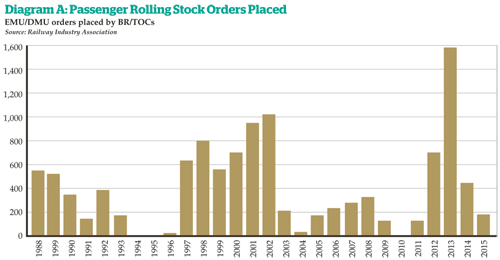 Thus the skills agenda remains (if anything) of even greater importance now than when the commitment to create the National Skills Academy for Railway Engineering was first made. NSARE is a valuable industry/Government initiative that needs to be both strengthened and funded realistically for the scale of the task in hand - in the supply industry, certainly, but also among the client bodies.
Thus the skills agenda remains (if anything) of even greater importance now than when the commitment to create the National Skills Academy for Railway Engineering was first made. NSARE is a valuable industry/Government initiative that needs to be both strengthened and funded realistically for the scale of the task in hand - in the supply industry, certainly, but also among the client bodies.
It is remarkable that in these circumstances the most recent edition of Network Rail’s Supplier Perception Survey should have shown marked improvement compared with earlier years, and Network Rail is to be congratulated on the achievement.
Moreover, the cross-industry work now going on in the Asset Programme and Supply Chain Management Group of the Rail Delivery Group (RDG) is showing signs of generating substantial potential returns from optimising track access and usage. Indeed, supply industry surveys have played an important part in this, with respondents emphasising the importance of joint contractor/client and client/TOC engagement from the earliest stages in project development.
The supply industry did not accept the view of the McNulty Report that the UK railway was around 40% less efficient than comparator railways in other countries. On the contrary, we identified good reason for thinking that the basis of that figure might not bear the weight of analysis being placed upon it.
This is important - having at the time of CP3 noted that very substantial cost savings were available, for CP4 and CP5 we urged a much more cautious approach. Few railways have managed to halve their costs in the way expected of Network Rail (see Diagram D, below), while maintaining or growing their outputs.
However, what is clear from our analysis is that project churn - the extensive, wasteful and endemic change to project scope, timing and content in the last few weeks before work starts on the ground - is wasteful of scarce resources, damages the quality of the industry’s offer to its customers, and should be brought urgently under control.
The membership surveys mentioned above have reflected infrastructure members’ frustration at Network Rail’s reluctance to engage more widely in the early stages of project development. The consensus is that significant efficiencies could be achieved if only Network Rail would embrace true collaboration in an open and constructive way with its supply chain partners. There is a huge willingness to share the collective experience, knowledge and competence in addressing the challenges that we all face.
In short, we urge you:
Don’t change the plan, scope, programme and parameters once agreed and published. BUT… do change the approach to the supply chain, and embrace what supply companies have to offer in an open and collaborative way.
There is much more to be said. The importance of stimulating the industry’s exports is crucial. At the same time, the strengthening of genuinely based client demand for innovation and the opening of routes to market (especially for SMEs) are essential moves if the industry is to prosper, grow and re-assume its previous position of global leadership.
Both the supply side and client side are facing tough challenges:
- Coping with major senior staff changes
- The consequences of reclassification, not least for the control of expenditure
- Trying to get more built in shorter timescales on an ever-more congested railway
- The advent of substantial technological change in the form of the Digital Railway
We both have a shared interest in the long-term future of the railway. We both depend upon it. Many supply companies, from small to multinational, have introduced major innovations on the railway, and there are more to come.
In short, RIA members should be seen not as part of the problem, but as part of the solution.
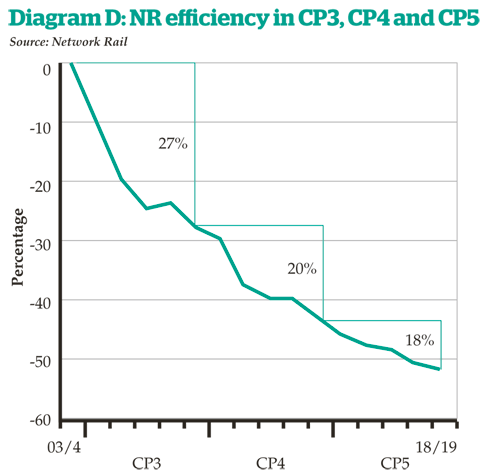 Read the peer review for this feature.
Read the peer review for this feature.
Download the graph for this feature.
 Peer review: Andy Lynch
Peer review: Andy Lynch
Managing Director, RVEL
As might be expected, Jeremy uses his comprehensive knowledge of the supply chain to produce an insightful review of the challenges faced by members of the rail supply chain, when trying to do business with both the Government and Network Rail.
As RVEL employs just over 100 people and has a turnover of circa £12 million, we approach these particular challenges from the perspective of an SME in the rolling stock after-market (albeit one whose US parent, Loram, is very much a global player in the provision of specialist infrastructure services).
Our experiences over the eight years since RVEL was formed suggest there are some specific issues faced by SMEs in our marketplace. First and foremost, it is not easy to work across more than one industry discipline - rail market requirements are both onerous and specific.
To excel in any field a UK rail business needs dedicated facilities, specifically trained staff and industry-specific qualifications, as well as extensive safety and competency management systems. While necessary, all these add significant layers of cost to rail businesses, costs that are not borne by players in other sectors (for example, the automotive after-market).
Despite protestations to the contrary, the drive to reduce costs encourages organisations such as Network Rail to accept bids with the lowest tendered cost, even when this will demonstrably not offer best value over the life of the contract. It is perhaps no surprise therefore that costs during the life of a contract frequently end up ‘busting the budget’. To address this, technical competence should at least be given greater weighting in bid evaluation, or (in an ideal world) equal weighting to that given to cost.
Of course, this demands a more trusting relationship between customer and supplier. Many suppliers would like to further deepen their relationships with NR by supporting the company’s strategic decision-making process, particularly as these suppliers are selected because they have the very skills that NR does not have in-house. Utilising the supplier’s hard-won knowledge and expertise can help deliver alignment of supplier and customer objectives, and more importantly achieve long-term cost reductions.
On a more positive note, collaborative working is beginning to emerge within the rolling stock after-market, and there are signs that if this trend continues it will offer major improvements in how we all work towards a common goal.
However, some words of caution: while successful businesses in the supply chain increase their knowledge and skills over time, there is a growing concern across the industry that Network Rail is experiencing the reverse of this trend. With skilled engineers and operators retiring or seeking opportunities overseas, the infrastructure operator is facing an accelerated dearth of hard-won knowledge and experience. Again this points to the criticality of NR partnering with suppliers to get sustainable long-term value out of the company’s assets.
With the loss of these in-house skills there is the very real danger that NR reverts to rigorous interpretation of contracts, as opposed to taking a rounded view based on what is the best long-term or (where appropriate) pragmatic solution. With many contracts now containing highly onerous penalty clauses there is a reduced incentive to outperform, because the risks of doing so are too great. This needs addressing if we as an industry are serious about genuine collaboration. Meanwhile, old hands mutter darkly about NR shifting back towards the less than glorious days of Railtrack.
The Railway Industry Association’s innovation conferences and events can play their part in showing the way ahead. They already demonstrate what can be done when clients work not just with their suppliers but also universities to drive innovation across the railway. That said, unlocking funding for R & D remains a long and tortuous process. Sometimes it seems that the only beneficiaries are the intermediaries that exist to facilitate access to this funding.
As a final observation, it is worth pointing out that an often-unremarked cause of cost creep in our industry is the prevalence of apparent closed shops in certain markets. Our experience suggests that unless you are an existing supplier to organisations such as London Underground, then tendering for contacts can be both an expensive and pointless task.
If major organisations are serious about growing and encouraging a vigorous supply chain, then considered risks need to be taken by awarding work to new or growing suppliers. Consolidation within the aftermarket may appear to be a blessing but can lead to unintended consequences, not least the massive price increases witnessed over the past 20 years in certain consumables (wheelsets and brake blocks, to name just two).
A healthy market is a competitive market. Sir Peter Hendy has the opportunity to set a new direction at Network Rail - first and foremost he should trust his suppliers to help deliver his company from its current problems.

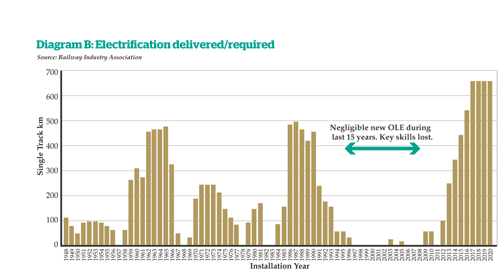
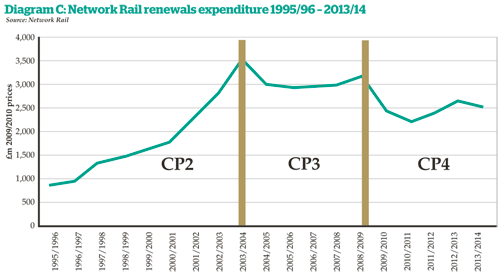
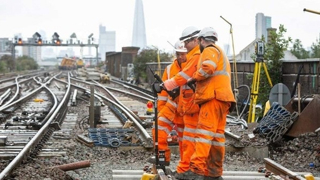
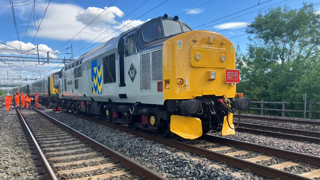

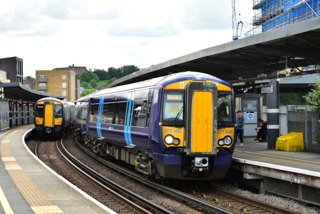
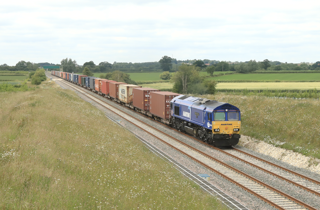










Login to comment
Comments
No comments have been made yet.